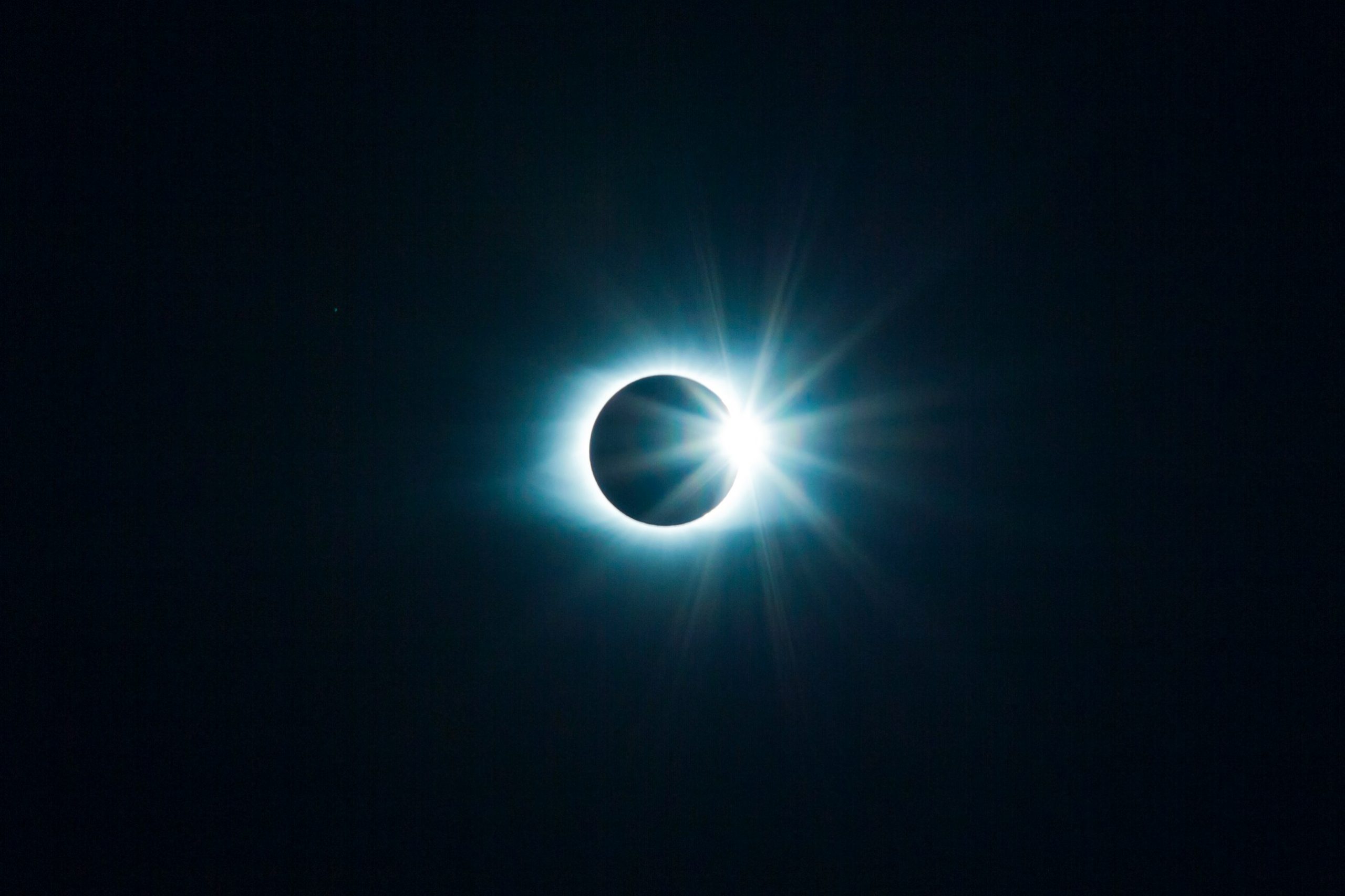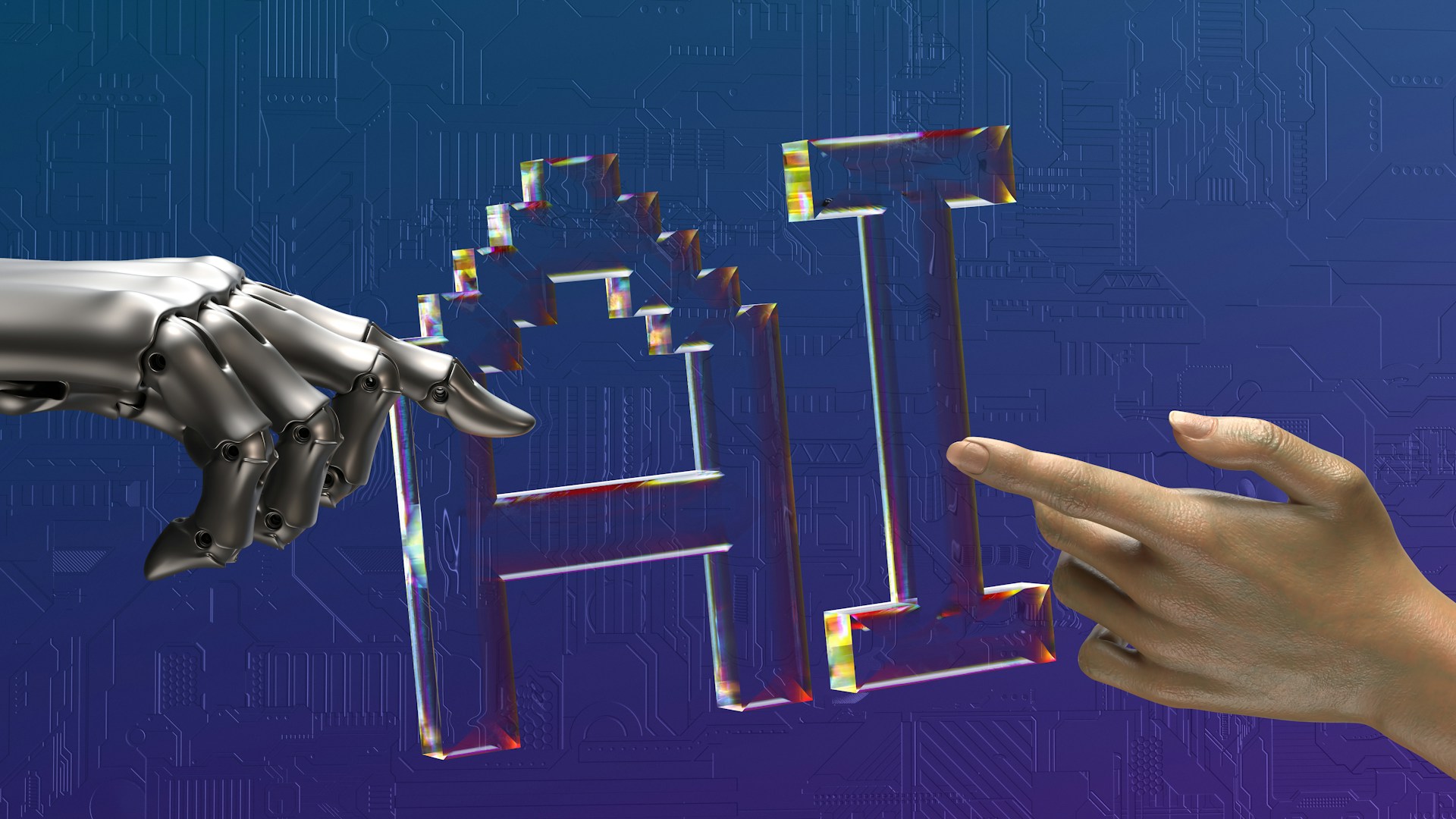Ben Bradley, Joshua Selfridge, and Siobann Bouyer reflect on whether we can stop getting burned as we shoot for the stars. Photo Credit: Tyler van der Hoeven via Unsplash
On 4 August 1972, American aircraft were flying near Hon La, Vietnam, where a field of sea mines had been placed as part of Operation Pocket Money. Suddenly, the pilots were startled by roughly two dozen explosions over a period of 30 seconds. The sea mines below them had mysteriously all been triggered. Although they did not know it, they had just witnessed the consequences of space weather. The solar storms of August 1972 were some of the strongest in recorded history, causing power grid anomalies in North America, damage to satellites in orbit, aurorae strong enough to cast shadows on the southern coast of the UK, and the premature detonation of over 4,000 sea mines around South East Asia.
But whilst one American governmental agency was mining the coast of North Vietnam, another was landing humans on the surface of the Moon. Outside the protection of the Earth’s magnetic field, Apollo astronauts could have suffered acute radiation sickness during this storm, potentially receiving a lethal dose if completing a spacewalk. These disastrous consequences were only avoided by the fortunate timing of the solar storm—Apollo 16 and 17 were scheduled four months either side of the event.
Outside the protection of the Earth’s magnetic field, Apollo astronauts could have suffered acute radiation sickness during this storm, potentially receiving a lethal dose if completing a spacewalk.
NASA’s exciting new program of Artemis missions aims to send humans back to the Moon. Mitigating deadly space radiation will be more crucial than ever for the short- and long-term health of 21st-century astronauts. NASA sets a career radiation dose limit of 600 mSv—where 1 Sv corresponds to a 5.5% probability of developing fatal cancer from this exposure. To protect the astronauts of the future, NASA and its partners are developing a sophisticated set of shielding and mitigation strategies. This was one of the objectives of the uncrewed Artemis 1 mission, which launched in 2022. The two manikins on board, each embedded with over 5,600 sensors, provided a wealth of space-radiation data that is currently being analysed in preparation for the next Artemis mission. Artemis 2, scheduled for 2025, will be the first mission to take humans beyond low-Earth orbit—and into orbit around the Moon—in over 50 years.
Mitigating deadly space radiation will be more crucial than ever for the short- and long-term health of 21st-century astronauts.

Animation of the Flight Path of the Orion spacecraft on the Artemis 1 mission, in both an inertial and non-inertial frame of reference. Data courtesy of NASA, animation framework adapted from JackCSheehan.
With further Artemis launches planned into the 2030s and beyond, it is not unreasonable to imagine yourself in the shoes of one of the astronauts in the later stages of the program. What radiation would you be subject to, and how would you be protected? Let’s explore these questions step-by-step, travelling from rocket launchpad all the way to planting your everlasting bootprint in the dusty grey regolith.

Apollo 11 astronaut Buzz Aldrin’s bootprint on the surface of the Moon. Credit: NASA.
Our journey begins at the Kennedy Space Centre launchpad, Florida, USA. Strapped into your seat aboard the Orion spacecraft atop NASA’s Space Launch System rocket, a countdown crackles through your helmet. You think about the Earth’s protective magnetic field and atmosphere that facilitates life. Down on the surface, radiation from space accounts for only 12% of the exposure we experience. The average UK citizen receives a radiation dose of 2.7 mSv per year, approximately half of which comes from radon gas slowly produced by rocks and soil.
You think about the Earth’s protective magnetic field and atmosphere that facilitates life.
Out in deep space, though, things are different. It’s perhaps slightly ironic that, in terms of radiation hazards, the safest part of your journey is when strapped to a column of highly reactive chemicals that are about to be set on fire. From here on, you must trust the exhaustive planning, modelling, and engineering conducted to keep your radiation exposure below the NASA career limit. An astronaut is chosen as much for their fitness as their skills and abilities. You have a baseline risk of lifetime cancer mortality of 15%, compared to the average American’s 21%. Exposure to the full 600 mSv limit would raise this risk to 18%, halfway between the two. You push the thoughts away; you’re about to launch in 3, 2, 1…

Cancer mortality risks from space radiation and lifestyle choices. NASA limits the total career dose to 600 mSv, which equates to a ~3% increased risk. Data courtesy of NASA, and Cancer Research UK
As the ground falls away and the atmosphere thins, your natural shielding from radiation thins with it. At 10,000 m, you pass the cruising altitude of aeroplanes. Here passengers and crew are exposed to around 0.01 mSv/hr, the equivalent of 5 chest X-rays for a typical transatlantic flight. From the heights of the International Space Station, you would be subjected to a year’s worth of radiation every few days. Just eight minutes after lift-off, you enter orbit and the rocket shuts off, delivering a sudden sense of calm. Your straps catch you as you begin to float away from your seat. You take a moment now to recall the sources of the space radiation you will encounter on your journey.
The greatest radiation threat to mission success comes from the Sun. Although it supports life on Earth, our star is a volatile and dangerous host. Solar flares and coronal mass ejections subject the Earth to solar particle events (SPEs) on an unpredictable schedule. Large bursts of fast-moving protons and electrons are ejected from the solar surface, with up to one million particles passing through each square centimetre per second. A single event can last anywhere from several minutes to several days. The Earth’s magnetic field deflects much of the oncoming barrage. Particles that get through collide and decay in the upper atmosphere, preventing the vast majority of radiation from reaching the Earth’s surface. For your journey beyond the refuge of Earth, artificial shielding is an absolute necessity in case an SPE occurs. Unshielded doses could reach hundreds or thousands of mSv over a very short period, leading to acute radiation sickness and a serious, immediate threat to life.
Staring out a small square window at the inky black of space, you’re startled by an amorphous blob of light streaking across your vision. Cosmic ray visual phenomena, or “Astronaut’s eye”, is visual proof of yet another source of radiation. Whilst the mechanism isn’t known exactly, a popular hypothesis is Cherenkov radiation. Particles travelling faster than the speed of light in the gel-like vitreous humour of the eye release a burst of photons in front of them: a “sonic boom” of light in your eyeball!
Cosmic ray visual phenomena, or “Astronaut’s eye”, is visual proof of yet another source of radiation.
These phenomena are caused by Galactic cosmic rays (GCRs), high-energy particles originating predominantly in supernovae across the Milky Way and other galaxies. Each square centimetre of your skin receives a few GCRs per second, a far smaller flux than that from a solar flare. However, GCRs can be far more energetic than SPEs, with the extreme end of their energy distribution reaching energies comparable to a punch. These particles are so small and fast that they whizz through you like atomic bullets, barely noticing your body but seriously damaging any DNA they directly collide with. Even metres-thick radiation shielding goes virtually unnoticed by GCRs, resulting in a constant, low-level exposure of around 1 mSv/day.
This GCR flux is inversely correlated with solar activity: when the Sun is most active, its magnetic field is most effective at deflecting the stream of particles from the interstellar medium. For this reason, some have argued that future missions to Mars should be timed to coincide with solar maxima to reduce GCR exposure during the 2–3 year round trip.
This GCR flux is inversely correlated with solar activity: when the Sun is most active, its magnetic field is most effective at deflecting the stream of particles from the interstellar medium.
A thruster rumbles to life again, beginning the injection burn. Whilst you’re receiving a much higher dose of radiation than on the surface, the Earth’s magnetic field is still protecting you from some. Before you venture into deep space, you have a different radiation hazard to negotiate: the Van Allen belts. These doughnut-shaped prisons of trapped charged particles must be traversed quickly to minimise your radiation exposure and prevent damage to the spacecraft electronics. When cosmic rays violently collide with air molecules in the atmosphere, neutrons are scattered in all directions. The neutrons that scatter back out of the atmosphere and decay into protons are trapped by the Earth’s magnetic field and form an inner belt of radiation. The outer belt (composed primarily of very energetic electrons but also alpha particles and protons) is formed by directly trapping solar radiation particles. The size and concentration of these belts fluctuate in response to solar storms, and they both dip towards the poles at high latitudes. Around the equator, the inner belt extends between 1,000–12,000 km and the outer belt between 13,000–60,000 km, leaving a ~1000 km gap known as the “safe zone”.

The shape of the two Van Allen belts of the Earth (not to scale). Credit: NASA.
Safely through the belts with minimal exposure, you now face a four-day transit to the Moon. Constant flight checks, experiments, and interactions with your crew make the days pass quickly. Midway through the third day, however, an alarm starts to blare and lights flash. Reports from mission control indicate solar flare activity, which could build up to an SPE. This is quickly confirmed by the radiation detectors outside the spacecraft, with solar radiation steadily climbing. Despite the hull of your Orion spacecraft blocking the majority of the radiation, the sheer number of particles means you could receive up to 250 mSv (~40% of your career dose) within the next few hours. Your training kicks in and you rush to prepare a shelter, methodically rearranging equipment and storage. The thick layer of mass you establish between the hull and your crew sheltering in the centre reduces your radiation exposure by roughly a factor of four. A radiation vest strapped around your chest and hips adds a final layer of protection for your vital organs and the major bone marrow staging posts of your immune system. Thankfully, the SPE is short-lived and within a few hours the radiation is low enough to dismantle the shelter and continue as normal.
Finally at your destination, you dock with the space station Lunar Gateway. Its orbit is carefully maintained to pass close over the lunar north pole and far out over the south pole, with the orbital plane oriented so Gateway always remains visible from Earth. Exploring the station with your crew, you notice the radiation shielding strategies employed here too. One of the compartments will act as the shelter for any SPEs encountered during your time here. The walls are lined with extra pockets full of water, there to absorb secondary neutrons generated by the interaction of SPEs with the hull. As the water is used up it will be replaced by urine and dehydrated faeces—fun!

An artist’s impression of Lunar Gateway hosting the Orion spacecraft and a concept lunar lander. Credit: NASA.
The modules of Lunar Gateway and the Orion spacecraft have all undergone rigorous testing to ensure they block solar radiation as effectively as possible. Assessing the vulnerability of different areas can quickly become a complex task due to the generation of secondary radiation within the shielding itself. Determining the optimal thicknesses and configurations, as well as the doses expected from these designs requires sophisticated radiation modelling techniques.
A key tool for this task is Monte Carlo ray tracing, the basis of the radiation-modelling software developed by Australian defence company Amentum Scientific. This method tracks particles along a random sample of possible paths through a structure, estimating the radiation dose at each point by statistically averaging the relevant particle tracks. Human models can also be included to convert particle flux to an effective dose based on the biological vulnerability of different areas of the body. An iterative process of design, modelling and redesign has yielded the sophisticated radiation shielding that surrounds you.
Soon enough, the time comes for the main event of the mission: descent to the lunar surface. You board the SpaceX Starship Human Landing System, a hulking rocket 50 m tall that dwarfs the 5.5 m Apollo lunar landers of the 60s and 70s. After touching down to the surface, you suit up, cycle the airlock, and open the door. Gazing out at the desolate, cratered surface, you look to the horizon and see that it noticeably curves. The 3,500 km ball of puckered rock beneath you blocks half of the cosmic rays emanating from the depths of the universe. This won’t protect you from another solar storm though. To see what you are doing and to avoid temperatures of -130 ºC you were forced to land during the lunar day.
This site has been chosen to host the upcoming Moon base, which will provide a launching point for future missions to Mars. Whilst the duration of your mission hasn’t been long enough to warrant protection from highly penetrating GCR radiation, long-term occupancy of a lunar base will require significant shielding. Burying the base beneath mounds of lunar regolith, such that several kilograms rest above every square centimetre, would be enough to block most GCRs and keep long-term exposure within safe limits.
With your boots finally pressed into the lunar dust, you can’t help but think of the immortal words of Neil Armstrong. Travelling back to the Moon over 55 years later, Artemis is a run-up for the next giant leap, which is surely a crewed spaceflight to Mars. The journey to the Red Planet will subject astronauts to prolonged periods within interplanetary space, pushing the boundaries of radiation reduction. The ability to brave storms like those of August 1972 while mitigating the constant danger of cosmic rays will be crucial, with the Artemis programme acting as a testbed for these solutions. Space is notoriously difficult, but with a strong programme of science and space missions planned, humanity can truly begin reaching out to the stars without getting burned.





